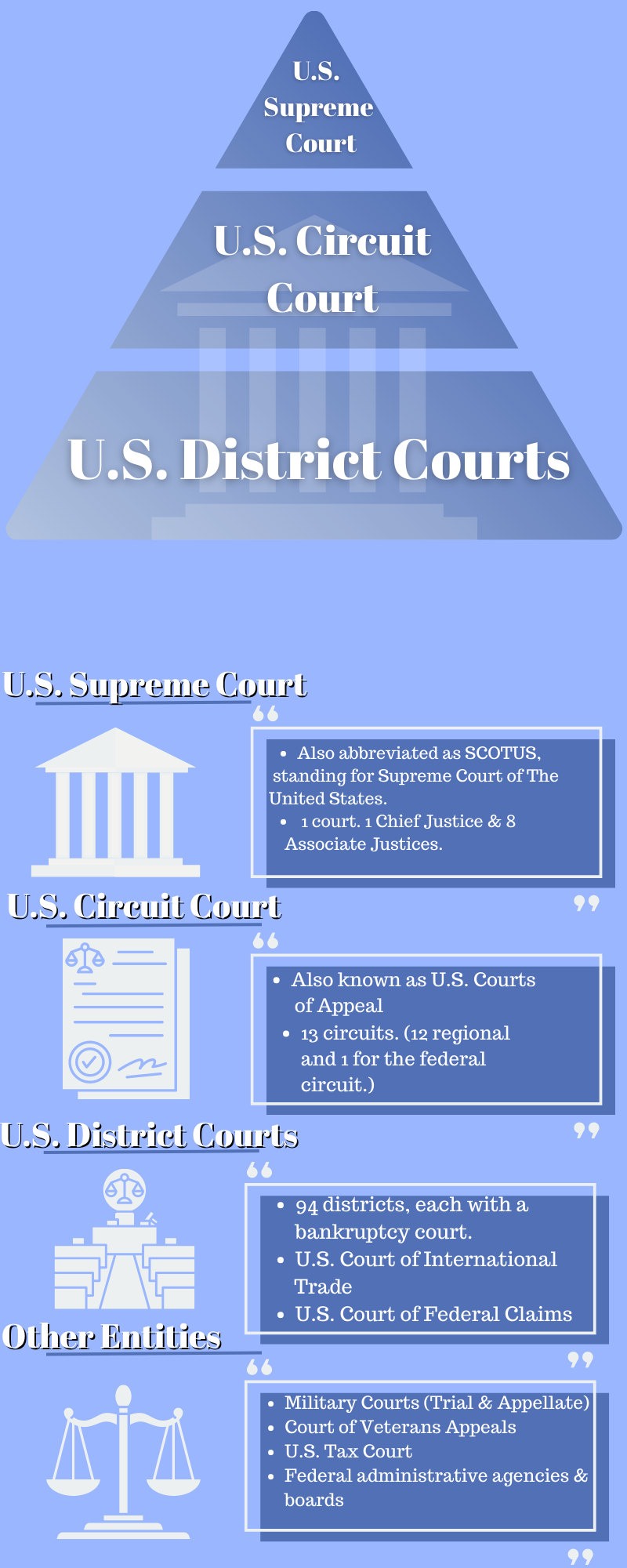Question:
What is the structure of the court system?
Short Answer:
The court system of each state as well as the federal court system, is structured into three main tiers: local or district courts, appellate courts, and the Supreme Court, each with different functions and types of cases they handle.
Long Answer:
The United States court system is a complex entity that’s organized in a hierarchical fashion. It consists of three main levels – local or lower courts, appellate courts, and the Supreme Court. These courts deal with various types of cases and serve different functions. Note that there is a separate and distinct court system of various state courts as well as the federal court system.
Local or District Courts
At the base of the pyramid are the local or district courts, also known as trial courts. These are the courts where most cases start. In a district court, parties present evidence and make arguments, and a judge or jury makes a decision based on the facts presented.
Local courts handle a wide array of cases, including both civil and criminal. Civil cases involve disputes between individuals or businesses, whereas criminal cases involve charges against individuals accused of crimes. Whether it’s a dispute over a contract, a personal injury claim, or a criminal charge such as theft or assault, these cases are typically handled at the local court level.
Appellate Courts
The second level in the court system is the appellate courts. These are the courts that review the decisions of the lower courts. If a party believes that a local court has made an error in their case, they can appeal to an appellate court for review.
Appellate courts do not conduct new trials. Instead, they review the record of the lower court trial to determine whether the proper procedures were followed and the law was correctly applied. If they find errors that could have affected the outcome, they can reverse the decision. If not, they affirm the decision of the lower court.
The Supreme Court
At the top of the hierarchy is the Supreme Court, the final arbiter of the law. The Supreme Court primarily handles cases on appeal from the lower courts. However, it doesn’t review every case. The Justices have the discretion to decide which cases they will hear, often selecting cases that raise important constitutional questions or where there’s a disagreement among lower courts.
The Supreme Court is unique in that its decisions are final and binding on all other courts. When the Supreme Court interprets the law, that interpretation becomes the law of the land.

Final Thoughts
Understanding the structure of the court system is crucial for anyone looking to understand how justice is administered in the United States. By knowing the roles of the local courts, appellate courts, and the Supreme Court, you can better understand the process that a case goes through from start to finish.
Learn More
On Other Sites
- Check out a video explaining this: Structure of the Court System: Crash Course Government and Politics #19
